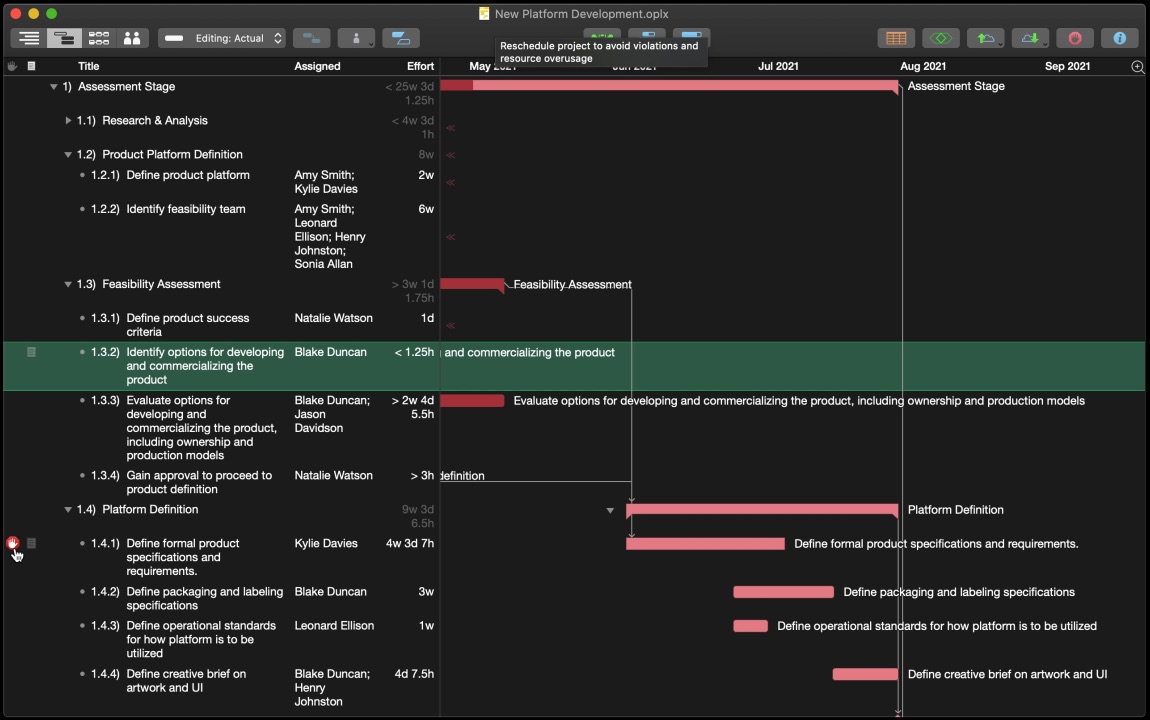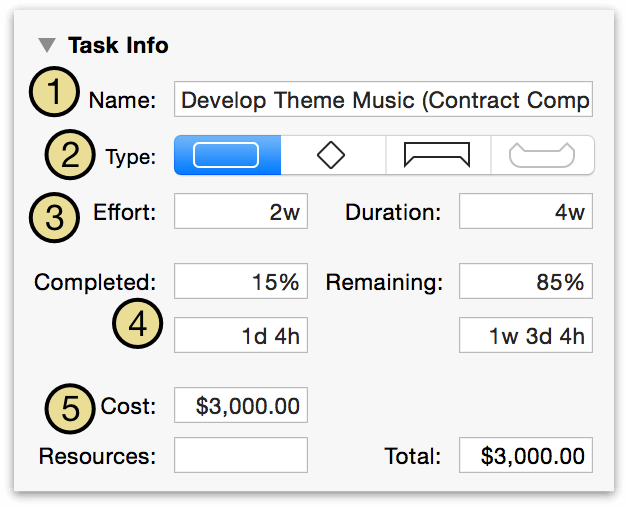


Entering an “ e” before the value for Duration converts it to an elapsed time value instead.įor example, if you need to wait for the paint to dry before you can take the next step in your project, enter 48eh in the “Let paint dry” task’s duration field to tell OmniPlan that the next dependent task can begin Monday morning if the paint has started to dry by the end of the day on Friday. These values cannot be edited directly.īy default, OmniPlan calculates task duration and lead/lag time from the project’s work hours.
#OMNIPLAN PRO EFFORT DURATION PLUS#
Resource, Total Costs-The cost of the resources assigned to the task (derived from the resources’ Cost Per Use and Cost Per Hour values), and the total cost of the task (the resource costs plus the task cost). Task Cost-Any costs associated with the task that are not reflected in the costs of the resources assigned to the task. Completed represents the amount of finished work on the task, while Remaining is the total effort required minus the completed effort.ĭuration-The amount of time required to complete work on the task. When Closed, Roll Up Children-Show a group task as an overlaid collection of the group’s child task bars when the task is closed.Įffort-The amount of effort required to complete the task.When Closed, Show Task Bar-Show a group task as a task bar representing the cumulative attributes of the group when the task is closed.Stop Recurring-Convert a recurring task back to its original type and cancels any future occurrences.Edit Recurrence Rules-Open the recurrence dialog to change the rules for an existing recurring task.Make This Task Recur-Convert an existing task or milestone to a recurring task.Hammock-A task whose duration varies based on the completion of the preceding task and the start of the task that follows.Īdditionally, the following options are available:.Group-A parent task used for creating hierarchy with child tasks within it.Milestone-A zero-length event which represents an important moment in the project’s life.Task-The standard representation of a piece of work to be accomplished as part of the project.Type-Choose from among the available types for the task, including: Name-The name of the task as it appears in the task outline. Use the Task Info inspector to set key attributes that define the type and scope of a task. The Task inspector holds tools for configuring selected tasks, including descriptive details and information about their scheduling, dependencies, and assigned resources. Balancing Resource Loads Across Projects.Using Simulations to Estimate Milestone Completion (Pro).


 0 kommentar(er)
0 kommentar(er)
